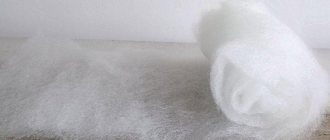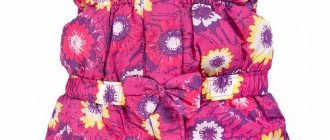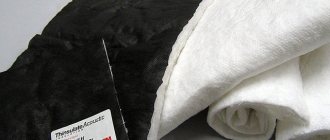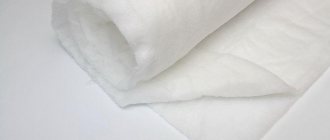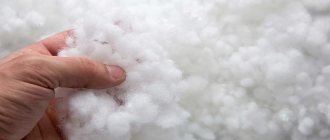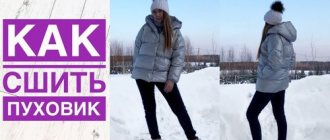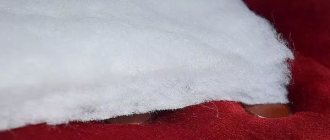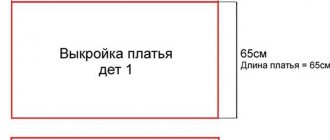The proximity of cold weather makes you think about buying warm clothes.
However, this raises the question: what kind of insulation should be used in clothing to provide sufficient warmth without restricting movement? Isosoft is a modern, inexpensive insulation material that can perfectly retain heat in a small volume. It is the brainchild of the famous Belgian brand Libeltex, which produces filtering nonwoven materials. It should be noted that this company has been doing this for more than 50 years, and, therefore, has vast experience and the trust of customers all over the world.
Libeltex production facilities are located not only in Belgium, but also in Sweden and France. Local production of isosoft is carried out only at one plant. This means that the production process is completely coordinated at all stages.
The constant introduction of the most advanced technologies has allowed Libeltex to successfully create a wide variety of types of insulation, both for bedding and outerwear for adults and children.
History of insulation, what principle it works on
The history of Thinsulate begins in the 60s of the last century, when NASA placed an order for insulation that could be used in extreme conditions (at that time we were talking about equipment for astronauts). The American company got down to business, and by the early 70s presented the result of its developments: a non-woven material made of microfibers with all the requested characteristics.
This insulation was patented under the name Thinsulate (thin - thin, insulation - heat protection, insulation). Even then, it fully lived up to its name: the highest heat-protective characteristics with minimal thickness. Initially it was used for the needs of astronautics, by 1979 it went on sale, and since the early 2000s it has been a leader in the field of use for sports and professional workwear.
Thinsulate filler “works” due to the air inside the layer. See:
- The volume of the insulation layer (no matter what) consists of fibers and air between them.
- The more air per unit volume, the better it retains heat.
- The air inside is retained due to the smallest weaves of fibers.
- Reducing the thickness of the fibers allows you to increase their total area.
- The larger the area of the fibers, the greater the volume of air will be retained.
The uniqueness of Thinsulate lies in its microfiber, the surface area of which is approximately 10 times greater than that of other insulation materials.
Description of fabric, composition, cost
Let's clarify: Thinsulate filler, what is it? Essentially, it is an accumulation of the finest, 2-5 microns, fibers enclosed on one or both sides in a shell of non-woven material (see photo). Some species are without a shell. It is light in weight and soft to the touch.
The thickness may vary depending on the type of material, there are only five of them:
- "C" (Classic). Thickness from 0.3 to 1.75 cm, density from 40 to 263 g/m2. Interlining - on the one hand, on two, two-layer interlining and without it at all. Polyolefin 65%, polyester 35%. The lightest and thinnest of all existing ones, 2 times warmer than other analogues. Thickness from 1 to 2.1 cm, density from 101 to 230 g/m2. Polyester 100%. The shell is double-sided, calendered, due to which there is no need to quilt parts already 25 cm long. This Thinsulate insulation for clothing is the most economical of all those presented. Thickness from 1.7 to 2.5 cm, density from 98 to 191 g/m2. Polyester 95%, polyolefin 5%. More voluminous than other insulation of this brand. The stitching step is about 30 cm, double stitching. Preferably under high-quality down-proof fabric (thread count 270 or more).
- "IN". Thickness from 0.2 to 0.8 cm, density from 105 to 420 g/m2. Polypropylene 88%, polyester 12%. Double shell. This Thinsulate is resistant to repeated compression and squeezing, and does not lose its heat-shielding properties. Under a waterproof membrane, it is quilted with a small diamond pattern directly with the lining.
- "FR". Thickness from 1.2 to 1.8 cm, density from 120 to 200 g/m2. Meta-aramid 65%, acrylonitrile and vinylidene chloride copolymer - 20%, polyethylene styrene 15%. Test-proven fire resistance without compromising thermal insulation properties.
This is what Thinsulate is, in jackets, overalls, other outerwear, blankets, etc. In Russian stores it is sold mainly of the “P” type. Its price, depending on the density, is from 400 to 900 rubles per meter. “S” is more difficult to find, and it will cost from 500 rubles/m. for wholesale purchases. “B”, the densest – from 1500 rub./m. Unfortunately, we could not find information about “FR”.
And we have an interesting proposal - compare it with holofiber, read the detailed description.
Holofiber
This is another one of the most popular insulation materials. Its structure is similar to a canvas consisting of hollow spirals. They become the insulating layer. The material is homogeneous and at the same time porous.
Production
The raw material used here is a polyester compound processed by the temperature bonding method. After processing, it is passed through a special wind tunnel, where the fibers are soldered into a web using high temperature.
Properties of holofiber
Thanks to a special production method, holofiber has a number of features:
- Strength. The holofiber filler is almost impossible to tear, since the fibers welded under the influence of temperature are incredibly dense.
- Environmentally friendly. Holofiber simply does not contain glue.
- Biological stability. Holofiber does not decompose and does not rot.
- Heat capacity and air tightness. You will not freeze even in the most severe cold, but you will not be haunted by the greenhouse effect during the transition season.
- Elasticity. Anything made from holofiber will return to its shape in a few minutes, even if it has been stored for several weeks in vacuum packaging.
- Soundproofing. It practically does not allow sound to pass through.
- Cheapness. Due to the availability of raw materials, holofiber is a fairly cheap insulation material.
Characteristics, properties of Thinsulate
The microfiber structure of the material makes it unique in its kind: depending on the type, it will protect at temperatures up to -30, -60°. If we compare it with natural down in terms of the ratio of thickness to heat retention level, then the down will be 1.5 times cooler. By the way, about Thinsulate, what temperature it is at, reviews mostly say “I wear it on a thin T-shirt”, “I only put on a jacket at -20”.
Besides:
- The fibers have minimal water absorption, less than 1% of their own weight. Whereas natural fillers can absorb up to 70%.
- Minimum weight and thickness. You get a warm product without excessive bulk.
- Hypoallergenic, compliance with European quality standards.
- Thanks to the peculiarities of the fiber bonding technology, the filler of the Thinsulate jackets does not bunch up, does not migrate inside the product, and does not shrink.
- High resistance to repeated compression, does not lose its heat-insulating qualities after storage in compressed form. The exception is the “FR” type.
- Good vapor permeability.
Useful: washing a down jacket in an automatic washing machine - rules and recommendations.
Below there are reviews about Thinsulate insulation: at what temperature to wear it, is it suitable for babies and how does it behave when sewing.
About the disadvantages: due to its high breathability, the material “works” 100% only with high-quality top coatings (with a high level of wind protection). It makes no sense to use it as insulation, for example, for a woolen coat. Therefore, when asking a search engine the question “Thinsulate filler, at what temperature does it work at minus”, one must take into account the features of the entire product.
We have also prepared an article about the benefits of synthetic down, be sure to read it.
Main features of isosoft
Isosoft consists of tiny polyester fibers created in such a way that they are better able to retain heat. The fibers are separated by cavities, which also retain heat and ensure that the product retains its shape. Isosoft has a double-sided polymer coating, so the fibers do not spread, but stay in shape.
Many of us have more than once encountered a situation where insulation (for example, padding polyester or feather) “leaked” through the lining. This will not happen with clothes insulated with isosoft. Libeltex is currently in no hurry to reveal the secrets of this property. What is known is that Isosoft insulation is created exclusively from raw materials that fully meet all international quality standards. This confirms that the company has the necessary certificates for the production of materials. Libeltex tries to minimize the use of chemical additives in production.
Where is the material used?
Since we are talking about Thinsulate, in general its purpose is clear: insulating clothes, shoes, making blankets and sleeping bags. But there is a more detailed division according to type:
- “C” - outerwear, urban and fashionable, hats, gloves, knitwear, leather goods.
- “R” - outerwear, urban and professional, gloves. Suitable for children's down jacket.
- "TIB" - Thinsulate for sports equipment, as well as bedspreads, blankets, sleeping bags, rugs.
- "B" - shoe production.
- “FR” - fire-resistant clothing for work associated with explosion and fire hazards (oil and gas sector, gas stations), fire-resistant blankets.
Products with Thinsulate insulation: how to wash, general care tips
You bought something with Thinsulate filling, can it be machine washed? Yes, machine washing is allowed, you just need to set the “delicate fabrics” mode.
And a few more rules:
- The maximum water temperature is from 40 to 60°, depending on the type of filler. It's better to look at the label here.
- If the top covering of the jacket is a membrane, then you need to use a special detergent, liquid soap or shampoo.
- If we squeeze out the Thinsulate with our hands, we apply medium force.
Additionally about care: drying – naturally, preferably on a horizontal surface; ironing – at minimum temperatures and without steam; Dry cleaning is not allowed; After each wearing, the jacket (or other product) must be dried.
We suggest you read an interesting article about the characteristics of padding polyester.
Application
Holofiber is added to clothes, pillows, blankets, mattresses and special suits. It is also used in recording studios! How is this possible? Good holofiber has soundproofing properties and therefore can be used as a material for acoustic panels.
Holofiber care
The main rule of care is identical for both insulation materials: do not wash in hot water! But in holofiber you can use intensive washing mode and use powders with bleaches.
Let's compare with other insulation materials, which is better?
And the first question is Thinsulate or Bio Down, which is warmer? Bio-fluff is synthetic fibers that form a mass somewhat reminiscent of holofiber, but without dense lumps. According to the manufacturer, depending on the thickness of the layer, you will be guaranteed thermal protection at temperatures down to -40°. Microfiber (of a certain type) can “hold” down to -60°. And one more thing: bio-down is still a filler, and not a finished canvas. This means that during wear, this filler can migrate inside the product, forming thinner, colder places.
Second comparison - which is warmer, Isosoft or Thinsulate? Isosoft is hollow fine-denie fibers molded into layers that look like regular padding polyester. In some of its varieties, hollow fibers are coated with silicones and polymers, which increases their thermal insulation properties. Operating temperature range – from 0 to -30°. In addition, the structure of isosoft is quite loose, which is why clothes will lose their thermal insulation qualities faster.
We are preparing a lot more interesting things for you. To avoid losing us, save this site to your browser bookmarks. We will explain how to wash a polyester jacket in a washing machine in the next article.
